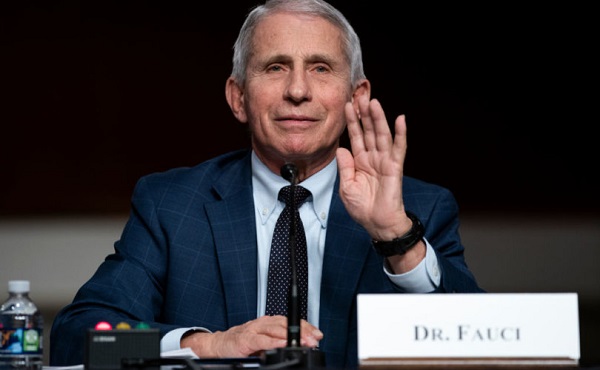Canadian Energy Centre
New deal with global gas giant Shell shows Canada is on the map for LNG: specialist
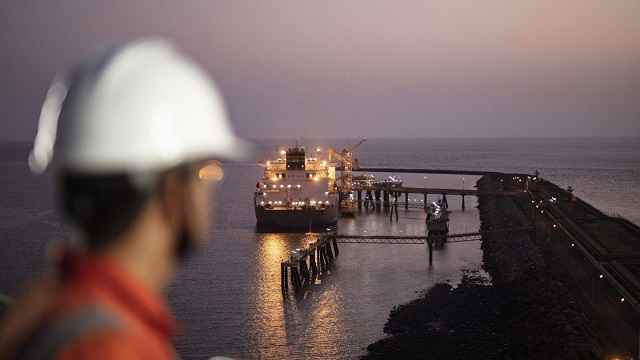
A worker at Shell’s Hazira LNG import terminal, about 250 kilometers from Mumbai, India. Photo courtesy Shell
From the Canadian Energy Centre
By Deborah Jaremko‘This is a signal that the LNG demand is viable beyond 2050’
A new 20-year deal by global energy giant Shell to purchase liquefied natural gas (LNG) from British Columbia is a sign Canada is becoming a player in global LNG markets, says an industry specialist.
Shell has agreed to buy two million tonnes of LNG per year from the proposed Ksi Lisims LNG project located near the Alaska border, which could start operating in 2028.
“Canada is on the map now for LNG. This is a signal that the LNG demand is viable beyond 2050,” says Racim Gribaa, president of Calgary-based Global LNG Consulting.
Gribaa has worked in energy for more than two decades, engaging with governments and industry on LNG developments around the world including Malaysia, the United States, Canada and Qatar.
Long-term LNG deals like the one struck by Ksi Lisims and Shell are hard to come by, he says, and are a sign that so-called LNG “portfolio players” trust the ability of Canada’s natural gas industry to deliver.
A portfolio player like Shell buys LNG from various suppliers and distributes it to buyers around the world – versus a buyer that purchases LNG solely for its own use.
“When portfolio players buy LNG, it’s not necessarily for a specific country. They can sell it anywhere they want,” Gribaa says.
“Canada’s west coast can enable them to sell cargo to efficiently meet demand in Asia without having to ship it all the way from farther locations. Instead of them shipping cargo from the Middle East, Europe, or from the U.S. thereby avoiding longer journeys around the Cape or going through the Strait of Hormuz or Panama Canal, instead they just send it straight from Canada to where they need it to go. It’s economically and logistically beneficial for them.”
Driven by expanding economies in Asia, world LNG trade has increased by more than 200 per cent since 2000, reaching 401 million tonnes in 2022, according to the International Gas Union.
Global natural gas use is rising, driving increased demand for LNG. The U.S. Energy Information Administration’s latest outlook projects natural gas consumption will rise to 197 quadrillion BTU in 2050, up from 153 quadrillion BTU in 2022.
In addition to the deal with Ksi Lisims owners including the Nisga’a Nation, Shell is also lead owner of the LNG Canada project, which is nearing completion at Kitimat, B.C.
The terminal will have capacity of 14 million tonnes per year when it starts up in 2025. The buyers of the exports from LNG Canada are its owners, including Shell and Petronas.
Shell’s decision to purchase LNG from Ksi Lisims could ensure it has plentiful supply available regardless of the timeline of the second phase of LNG Canada, Gribaa says.
“For a portfolio player, having options is valuable. We have enough demand globally to meet both Ksi Lisims LNG and LNG Canada phase 2, especially as coal is gradually faded out from Asia’s power mix,” he says.
“The only viable solution is to replace it with natural gas through LNG, as well as renewables, so the demand is forecast to be strong for several decades to come.”
Growing Canada’s LNG exports to Asia could reduce emissions by 188 million tonnes per year, or the annual equivalent of taking all internal combustion engine vehicles off Canadian roads, according to a 2022 study by Wood Mackenzie.
Down the coast from LNG Canada at Squamish, B.C. another major portfolio player is leaning on Canadian LNG.
BP Gas Marketing is the foundational customer for the Woodfibre LNG project, where early construction is underway.
Over a 15-year period, BP will purchase 1.95 million tonnes of the project’s 2.1 million tonne per year LNG capacity, and the remaining 0.15 million tonnes per year “on a flexible basis.”
“When you have such commercial commitments inked, it provides a future perspective on supply and demand, and perhaps most importantly it asserts the importance of Canada’s role in providing the world with a clean, affordable and secure long term LNG supply,” Gribaa says.
Canadian Energy Centre
First Nations in Manitoba pushing for LNG exports from Hudson’s Bay
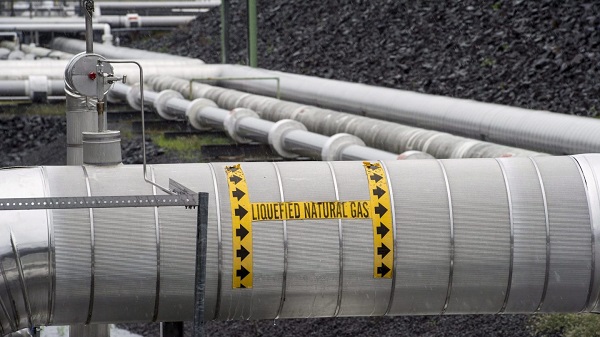
From the Canadian Energy Centre
By Will Gibson
NeeStaNan project would use port location selected by Canadian government more than 100 years ago
Building a port on Hudson’s Bay to ship natural resources harvested across Western Canada to the world has been a long-held dream of Canadian politicians, starting with Sir Wilfred Laurier.
Since 1931, a small deepwater port has operated at Churchill, Manitoba, primarily shipping grain but more recently expanding handling of critical minerals and fertilizers.
A group of 11 First Nations in Manitoba plans to build an additional industrial terminal nearby at Port Nelson to ship liquefied natural gas (LNG) to Europe and potash to Brazil.
Robyn Lore, a director with project backer NeeStaNan, which is Cree for “all of us,” said it makes more sense to ship Canadian LNG to Europe from an Arctic port than it does to send Canadian natural gas all the way to the U.S. Gulf Coast to be exported as LNG to the same place – which is happening today.
“There is absolutely a business case for sending our LNG directly to European markets rather than sending our natural gas down to the Gulf Coast and having them liquefy it and ship it over,” Lore said. “It’s in Canada’s interest to do this.”
Over 100 years ago, the Port Nelson location at the south end of Hudson’s Bay on the Nelson River was the first to be considered for a Canadian Arctic port.
In 1912, a Port Nelson project was selected to proceed rather than a port at Churchill, about 280 kilometres north.
The Port Nelson site was earmarked by federal government engineers as the most cost-effective location for a terminal to ship Canadian resources overseas.
Construction started but was marred by building challenges due to violent winter storms that beached supply ships and badly damaged the dredge used to deepen the waters around the port.
By 1918, the project was abandoned.
In the 1920s, Prime Minister William Lyon MacKenzie King chose Churchill as the new location for a port on Hudson’s Bay, where it was built and continues to operate today between late July and early November when it is not iced in.
Lore sees using modern technology at Port Nelson including dredging or extending a floating wharf to overcome the challenges that stopped the project from proceeding more than a century ago.
He said natural gas could travel to the terminal through a 1,000-kilometre spur line off TC Energy’s Canadian Mainline by using Manitoba Hydro’s existing right of way.
A second option proposes shipping natural gas through Pembina Pipeline’s Alliance system to Regina, where it could be liquefied and shipped by rail to Port Nelson.
The original rail bed to Port Nelson still exists, and about 150 kilometers of track would have to be laid to reach the proposed site, Lore said.
“Our vision is for a rail line that can handle 150-car trains with loads of 120 tonnes per car running at 80 kilometers per hour. That’s doable on the line from Amery to Port Nelson. It makes the economics work for shippers,” said Lore.
Port Nelson could be used around the year because saltwater ice is easier to break through using modern icebreakers than freshwater ice that impacts Churchill between November and May.
Lore, however, is quick to quell the notion NeeStaNan is competing against the existing port.
“We want our project to proceed on its merits and collaborate with other ports for greater efficiency,” he said.
“It makes sense for Manitoba, and it makes sense for Canada, even more than it did for Laurier more than 100 years ago.”
Canadian Energy Centre
Why nation-building Canadian resource projects need Indigenous ownership to succeed

Chief Greg Desjarlais of Frog Lake First Nation signs an agreement in September 2022 whereby 23 First Nations and Métis communities in Alberta will acquire an 11.57 per cent ownership interest in seven Enbridge-operated oil sands pipelines for approximately $1 billion. Photo courtesy Enbridge
From the Canadian Energy Centre
U.S. trade dispute converging with rising tide of Indigenous equity
A consensus is forming in Canada that Indigenous ownership will be key to large-scale, nation-building projects like oil and gas pipelines to diversify exports beyond the United States.
“Indigenous ownership benefits projects by making them more likely to happen and succeed,” said John Desjarlais, executive director of the Indigenous Resource Network.
“This is looked at as not just a means of reconciliation, a means of inclusion or a means of managing risk. I think we’re starting to realize this is really good business,” he said.
“It’s a completely different time than it was 10 years ago, even five years ago. Communities are much more informed, they’re much more engaged, they’re more able and ready to consider things like ownership and investment. That’s a very new thing at this scale.”
 John Desjarlais, executive director of the Indigenous Resource Network in Bragg Creek, Alta. Photo by Dave Chidley for the Canadian Energy Centre
John Desjarlais, executive director of the Indigenous Resource Network in Bragg Creek, Alta. Photo by Dave Chidley for the Canadian Energy Centre
Canada’s ongoing trade dispute with the United States is converging with a rising tide of Indigenous ownership in resource projects.
“Canada is in a great position to lead, but we need policymakers to remove barriers in developing energy infrastructure. This means creating clear and predictable regulations and processes,” said Colin Gruending, Enbridge’s president of liquids pipelines.
“Indigenous involvement and investment in energy projects should be a major part of this strategy. We see great potential for deeper collaboration and support for government programs – like a more robust federal loan guarantee program – that help Indigenous communities participate in energy development.”
In a statement to the Canadian Energy Centre, the Alberta Indigenous Opportunities Corporation (AIOC) – which has backstopped more than 40 communities in energy project ownership agreements with a total value of over $725 million – highlighted the importance of seizing the moment:
“The time is now. Canada has a chance to rethink how we build and invest in infrastructure,” said AIOC CEO Chana Martineau.
“Indigenous partnerships are key to making true nation-building projects happen by ensuring critical infrastructure is built in a way that is competitive, inclusive and beneficial for all Canadians. Indigenous Nations are essential partners in the country’s economic future.”
Key to this will be provincial and federal programs such as loan guarantees to reduce the risk for Indigenous groups and industry participants.
“There are a number of instruments that would facilitate ownership that we’ve seen grow and develop…such as the loan guarantee programs, which provide affordable access to capital for communities to invest,” Desjarlais said.
 Workers lay pipe during construction of the Trans Mountain pipeline expansion on farmland in Abbotsford, B.C. on Wednesday, May 3, 2023. CP Images photo
Workers lay pipe during construction of the Trans Mountain pipeline expansion on farmland in Abbotsford, B.C. on Wednesday, May 3, 2023. CP Images photo
Outside Alberta, there are now Indigenous loan guarantee programs federally and in Saskatchewan. A program in British Columbia is in development.
The Indigenous Resource Network highlights a partnership between Enbridge and the Willow Lake Métis Nation that led to a land purchase of a nearby campground the band plans to turn into a tourist destination.
“Tourism provides an opportunity for Willow Lake to tell its story and the story of the Métis. That is as important to our elders as the economic considerations,” Willow Lake chief financial officer Michael Robert told the Canadian Energy Centre.
The AIOC reiterates the importance of Indigenous project ownership in a call to action for all parties:
“It is essential that Indigenous communities have access to large-scale capital to support this critical development. With the right financial tools, we can build a more resilient, self-sufficient and prosperous economy together. This cannot wait any longer.”
In an open letter to the leaders of all four federal political parties, the CEOs of 14 of Canada’s largest oil and gas producers and pipeline operators highlighted the need for the federal government to step up its participation in a changing public mood surrounding the construction of resource projects:
“The federal government needs to provide Indigenous loan guarantees at scale so industry may create infrastructure ownership opportunities to increase prosperity for communities and to ensure that Indigenous communities benefit from development,” they wrote.
For Desjarlais, it is critical that communities ultimately make their own decisions about resource project ownership.
“We absolutely have to respect that communities want to self-determine and choose how they want to invest, choose how they manage a lot of the risk and how they mitigate it. And, of course, how they pursue the rewards that come from major project investment,” he said.
-

 2025 Federal Election2 days ago
2025 Federal Election2 days agoCarney’s Fiscal Fantasy: When the Economist Becomes More Dangerous Than the Drama Teacher
-

 International11 hours ago
International11 hours agoPope Francis has died aged 88
-
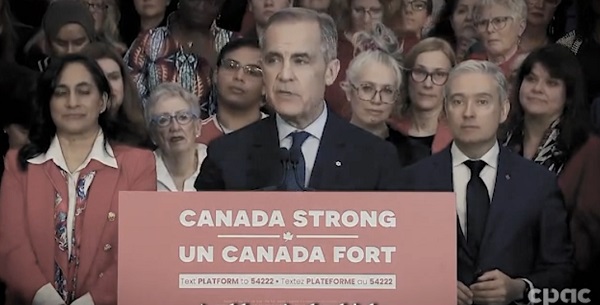
 2025 Federal Election1 day ago
2025 Federal Election1 day agoCampaign 2025 : The Liberal Costed Platform – Taxpayer Funded Fiction
-

 2025 Federal Election1 day ago
2025 Federal Election1 day agoA Perfect Storm of Corruption, Foreign Interference, and National Security Failures
-

 Business11 hours ago
Business11 hours agoCanada Urgently Needs A Watchdog For Government Waste
-
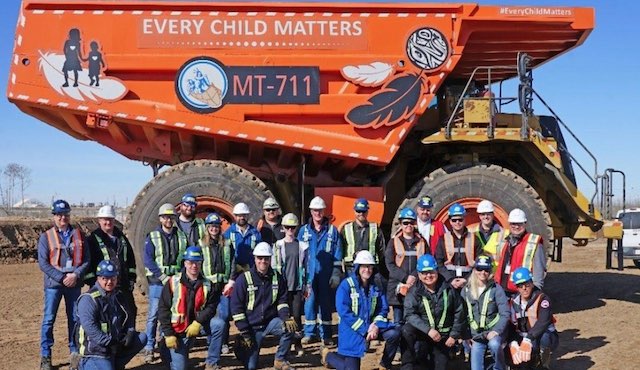
 Energy10 hours ago
Energy10 hours agoIndigenous-led Projects Hold Key To Canada’s Energy Future
-
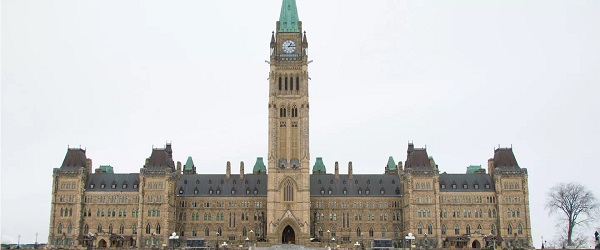
 2025 Federal Election10 hours ago
2025 Federal Election10 hours agoCarney’s budget means more debt than Trudeau’s
-

 International7 hours ago
International7 hours agoPope Francis Dies on Day after Easter










